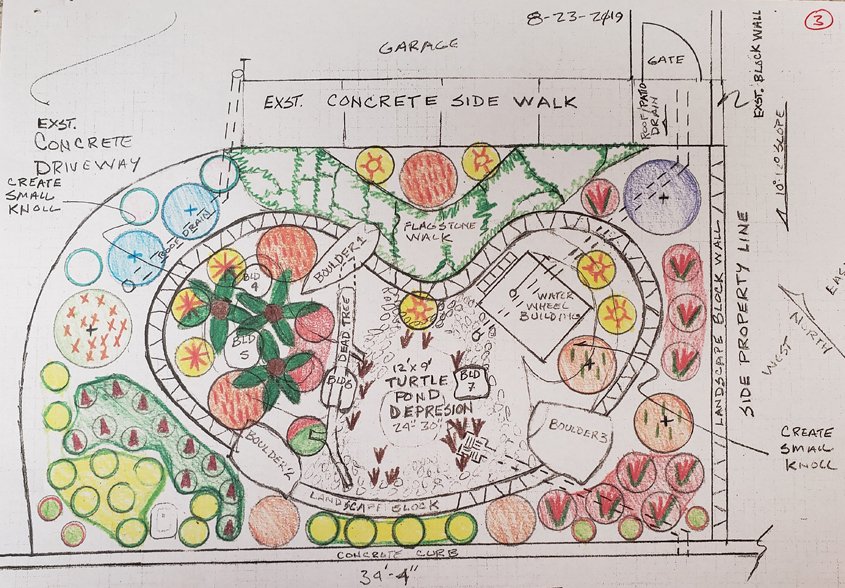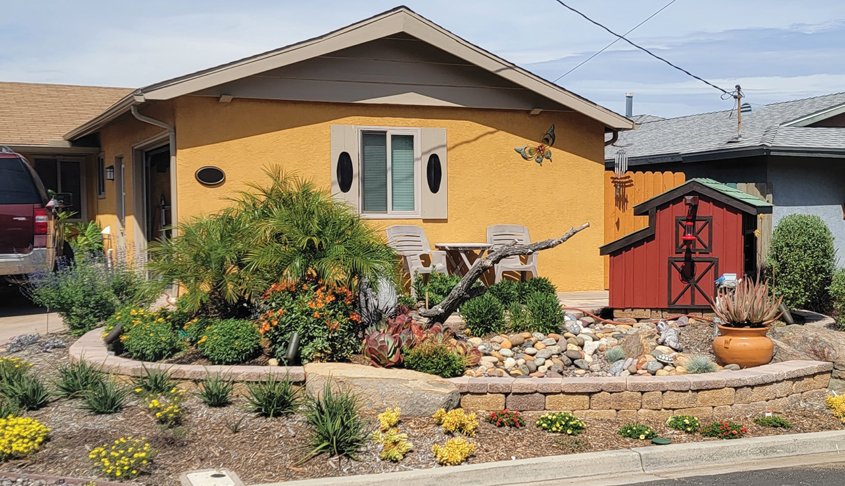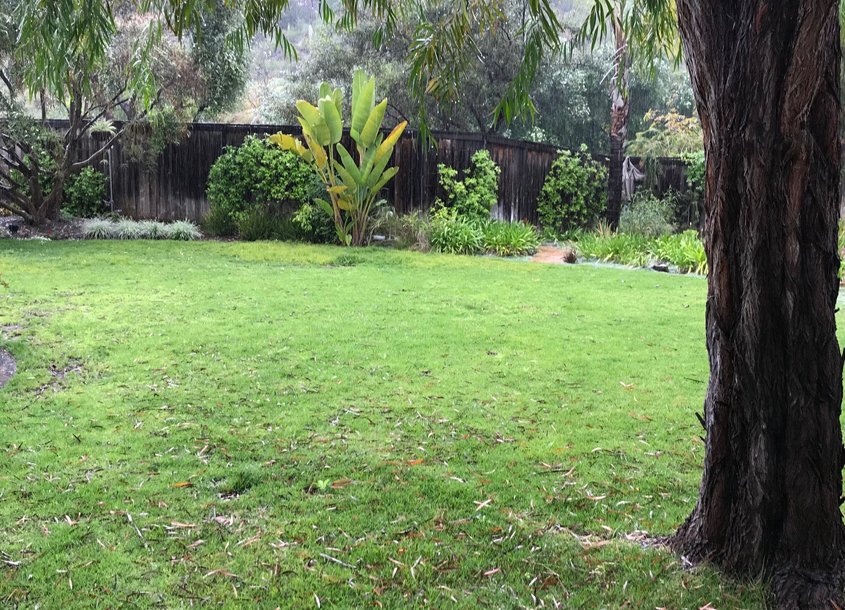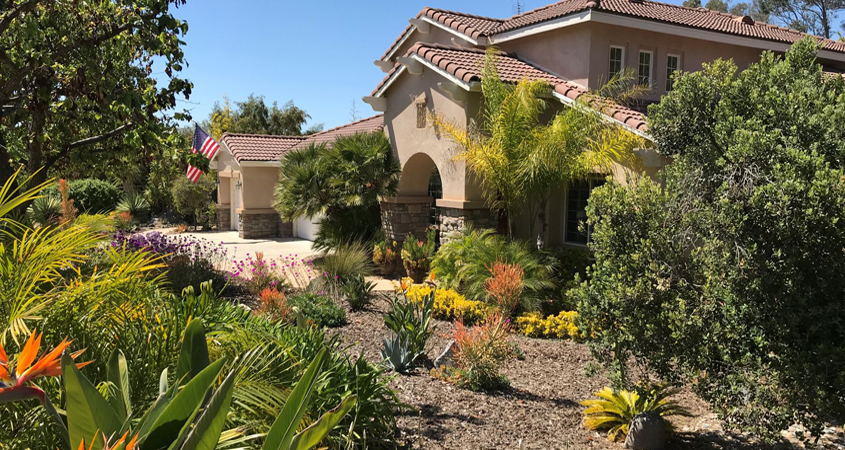There is a new opportunity for San Diego County residents who want to save water through the WaterSmart Landscape Makeover Program: “Designer At Your Door.”
This new in-person service offers on-site and in-studio technical design assistance from landscape industry professionals for qualified residents. As 2023 begins with cool, rainy weather, now is the ideal time to attend a virtual three-hour workshop to start your makeover.
This new iteration of the WaterSmart Landscape Makeover Program features the original award-winning WaterSmart curriculum delivered in three ways: special topic workshops available online and in-person; virtual skill-building videos; and in-person technical design assistance.
‘Designer At Your Door’ offers onsite help from landscape pros
“The WaterSmart Landscape Makeover Program is responsive to changing times and the changing needs of regional residents,” said Joni German, Water Authority water resources specialist. “The Designer At Your Door service replaces our award-winning four-class Landscape Makeover Series with the same quality education, combined with additional one-on-one, on-site support. We believe our enhanced approach will help residents achieve water savings with a beautiful new landscape that suits their lifestyle.”

Homeowner Frank Edwards had a complete plan after attending the Water Authority’s WaterSmart Landscape Makeover Series. Photo: Frank Edwards
Requirements for new service; registration information
Participants must meet qualifying criteria to participate in the new “Designer At Your Door” service. This includes a living lawn with a minimum size, a working in-ground irrigation system, and a willingness to install a more sustainable landscape. They must also attend a minimum of five three-hour workshops to qualify. Read more about the Designer At Your Door program and its requirements here.
Registration is required for the online workshops. The 2023 workshop schedule starts on Saturday, January 14. Weekday workshops are held from 5:30 to 8:30 p.m., and Saturday workshops from 9 a.m. to noon. Register here.
Introductory webinars focus on specific landscape topics with a “do-it-yourself” approach. From plant choices and irrigation to design and maintenance, webinars offer timely help on upgrading landscapes with low-water use plants and personal design touches.

The results of Frank Edward’s hard work. Photo: Padre Dam Municipal Water District
Sustainable landcapes use less water
WaterSmart has helped regional residents convert more than 1.5 million square feet of turf into beautiful, sustainable landscapes that use less water and provide a lifestyle-friendly yard ideal for San Diego’s climate. New landscapes installed through the WaterSmart Landscape Makeover Program have been proven to reduce water use by up to 37%.
San Diego County residents continue to take advantage of free online webinars offering step-by-step support to create a beautiful, water-efficient outdoor landscape. Webinar topics cover residential landscape design for the homeowner, plant palettes, healthy soil, irrigation retrofits, and streamlined landscape maintenance. More than 8,000 San Diego County residents have taken these courses to date.
These topics and more are covered in the program’s Video On Demand series. This series covers various landscape topics in short, entertaining, and instructional videos available 24/7.
Conservation gains plus rebates help offset investment

Deborah Brandt’s landscaping before its makeover. Photo: Vista Irrigation District
Landscape watering accounts for more than half of a typical household’s water use in California. The Water Authority’s online classes can help residents create a drought-tolerant, water-efficient landscape with a design that maximizes enjoyment of the outdoor space. In addition, homeowners can save the time and expense required for ongoing turf maintenance.

Colorful, water-wise plants replaced a thirsty, labor intensive front lawn in Deborah Brant’s winning landscape makeover. Photo: Vista Irrigation District
San Diego County homeowners, businesses, and organizations such as homeowners association (HOA’s) can receive between $2 and $4 per square foot to remove turf and replace it with low water-use plants better suited to our region’s climate. All customers are eligible for the base rebate of $2 per square foot. Learn more at socalwatersmart.com
Some agencies offer additional funding, including the City of San Diego and the County of San Diego. Residents in unincorporated San Diego County may be eligible for additional incentives through the Waterscape Rebate Program.
While San Diego County’s investments in supply reliability continue to protect the region, national weather models suggest drought, and a hotter, drier climate, will continue to strain water resources across the West and increase water conservation.
(Editor’s Note: The San Diego County Water Authority sustains a $268 billion regional economy and the quality of life for 3.3 million residents through a multidecade water supply diversification plan, major infrastructure investments and forward-thinking policies that promote fiscal and environmental responsibility. A public agency created in 1944, the Water Authority delivers wholesale water supplies to 24 retail water providers, including cities, special districts, and a military base.)








